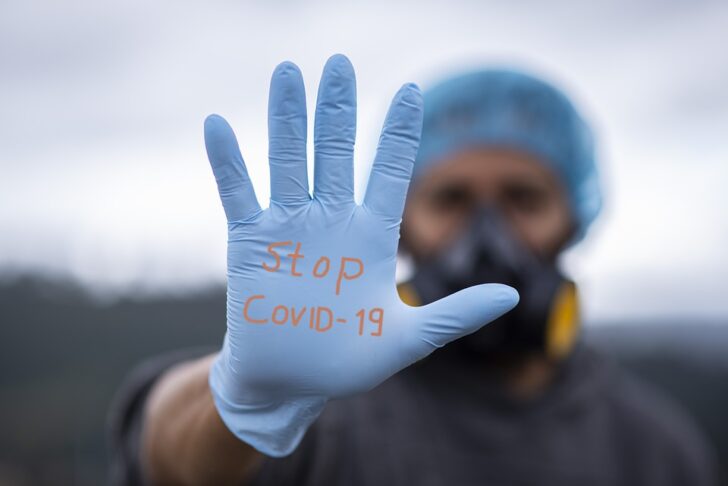วันนี้ เราก็มีข่าวสารดีๆมาฝากกันเช่นเคย
… ดูตัวเลขรายงานสถานการณ์โควิด (Covid19) ทุกวันที่มีแนวโน้มจำนวนผู้ติดเชื้อเพิ่มมากขึ้น แนวโน้มอุปกรณ์การรักษา และเวชภัณฑ์ที่อาจจะมีจำนวนไม่เพียงพอต่อความต้องการในเวลาอันใกล้ ก็อดคิดไม่ได้ว่า สถานพยาบาลหรือแม้กระทั่งโรงพยาบาลสนามที่ตั้งขึ้นมาชั่วคราวส่วนใหญ่ ก็ต้องมีวิธีการฆ่าเชื้อที่ดี และหนึ่งในวิธีการฆ่าเชื้อไวรัสที่มีประสิทธิภาพ ต้นทุนต่ำ และเป็นที่นิยมกันอย่างแพร่หลายก็คือ การปล่อยโอโซน
ด้วยเครื่องผลิตโอโซน ที่มีจำหน่ายทั่วไป ก็จะทำให้อากาศบริเวณโดยรอบสะอาดทั้งยังช่วยฆ่าเชื้อแบคทีเรียและไวรัสได้อีกด้วย โอโซนที่ความเข้มข้น 3-4 ppm จะสามารถฆ่าเชื้อโรค เชื้อแบคทีเรีย และเชื้อไวรัสได้ ในขณะเดียวกัน ที่ปริมาณความเข้มข้นเพียง 0.1 ppm กลับเป็นอันตรายต่อมนุษย์อย่างมาก ฉะนั้นสถานที่แห่งไหน ที่มีการปล่อยโอโซนในการฆ่าเชื้อโควิด-19 น่าจะมีมาตรการควบคุมปริมาณโอโซน ให้อยู่ในระดับที่เหมาะสม เพราะไม่เช่นนั้น สิ่งที่จะตามมาก็คือ
ความผิดปกติของผู้คนที่อยู่บริเวณโดยรอบ เราอาจต้องเผชิญกับปัญหา ทางเดินหายใจเรื้อรังแย่ลง โรคหลอดลมอักเสบ ถุงลมโป่งพอง และโรคหอบหืด ที่เพิ่มมากขึ้นในผู้ป่วย
ฟอร์มาลีน และ สาร VOC ที่มีผสมในน้ำยาทำความสะอาดก็เช่นกัน สำหรับผู้ป่วยทางเดินหายใจด้วยแล้ว มันอาจส่งผลกระทบอย่างรุนแรง และอาจทำให้การรักษา Covid-19 ยุ่งยากมากขึ้น

Indoor Air Quality & Respiratory Health (COVID-19) Monitoring for the levels of Ozone (O3) in hospitals and other medical institutions is extremely important because most healthcare facilities use ozone as air cleaner and disinfectant. Ozone is a powerful bactericide and virucide. It is commonly used as a disinfectant by generating ozone on-site with an ozone generator. It takes 3-4 ppm to kill germs, including bacteria, and viruses. However, ozone is highly toxic to humans at levels higher than 0.1 ppm. Levels of 5 ppm or higher are considered immediately dangerous to life. Ozone may worsen chronic respiratory diseases such as bronchitis, emphysema and asthma and compromise the ability of the body to fight respiratory infections. The YESAIR Portable Indoor Air Quality Monitor with ozone sensor, 0-5 ppm range, is recommended for this application.
Optional Sensors
Formaldehyde (CH2O) is another gas that can affect COVID-19 patients. Formaldehyde is a respiratory irritant that causes chest pain, shortness of breath, coughing, and nose and throat irritation. Exposure may cause wheezing, asthma attacks and other respiratory symptoms. Potential sources of formaldehyde come from building products and cleaning products such as detergents and disinfectants, and furniture and wooden products containing formaldehyde-based resins.
Another sensor we recommend is the PM2.5 particulates. PM2.5 are fine particles like organic and construction dust. PM2.5 contains toxic heavy metals and hazardous organic pollutants and can go directly to the lungs. It is more easily attached to bacteria and viruses in the environment, so the particles have greater impact on human health.
Volatile Organic Compounds or VOCs can be dangerous to human health when they enter the lungs or touch the skin. VOCs can irritate the eyes, nose, and respiratory tract, can cause difficulty breathing and nausea, and can damage the central nervous system as well as other organs. VOCs are gases that are given off by many indoor sources like paints and finishes to dry cleaning fluids and cleaning supplies. VOCs can be measured by the TVOC sensor but only as a group. So, the TVOC sensor will indicate the presence of these compounds and exhibit a reading which stands for the total of everything it is seeing. TVOC stands for “Total” volatile organic compounds.
หากลูกค้าสนใจเรื่องคุณภาพอากาศในโรงพยาบาล Covid19 และฝุ่น PM2.5 สามารถติดต่อเราได้ที่นี่

